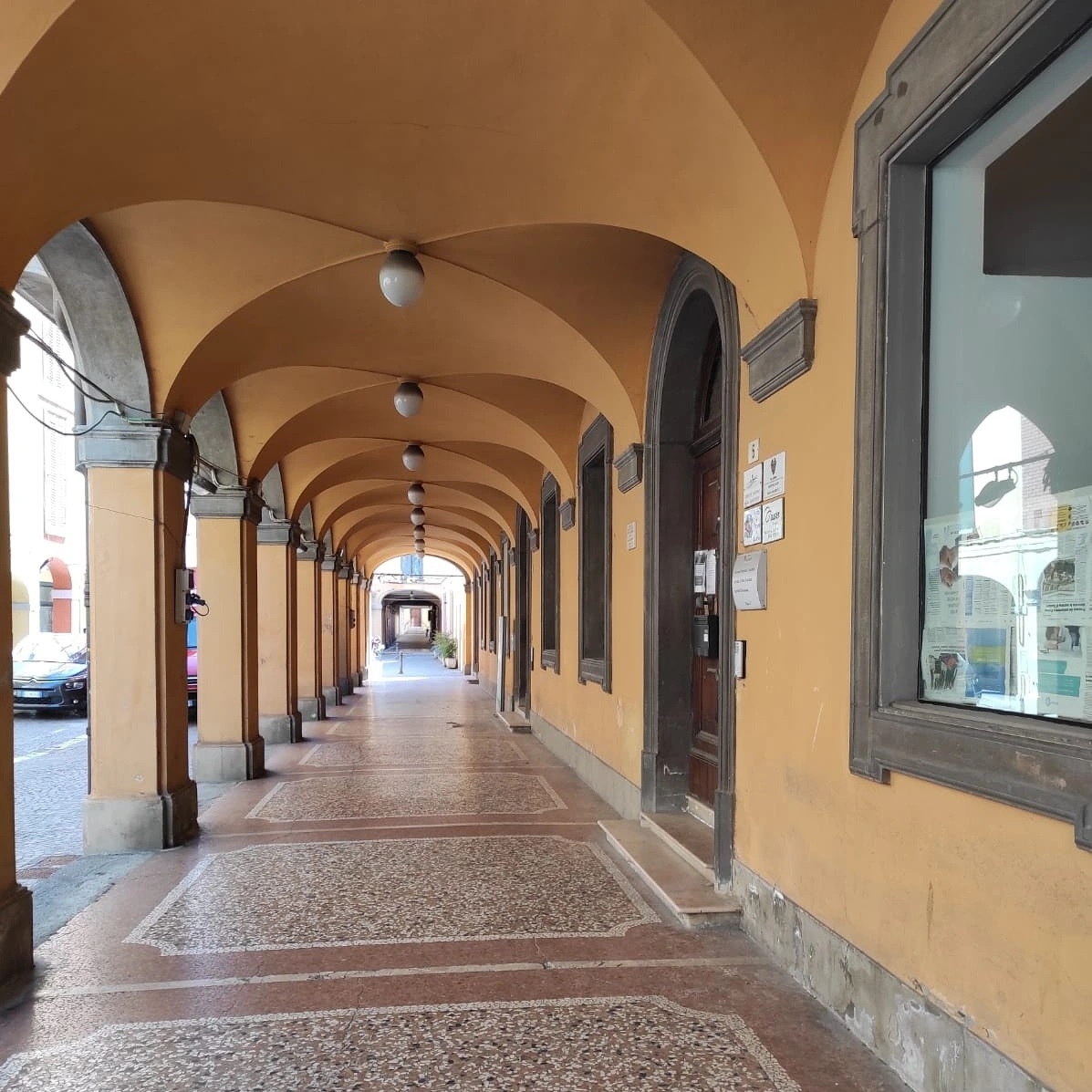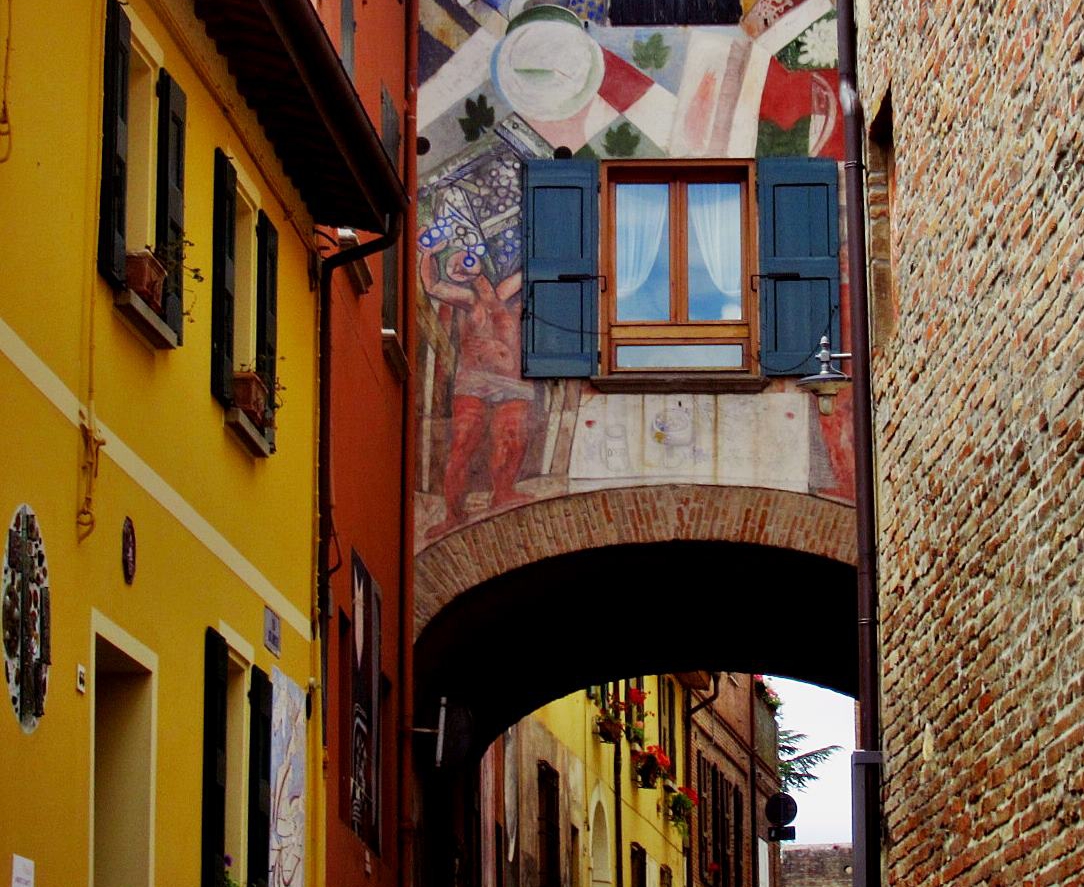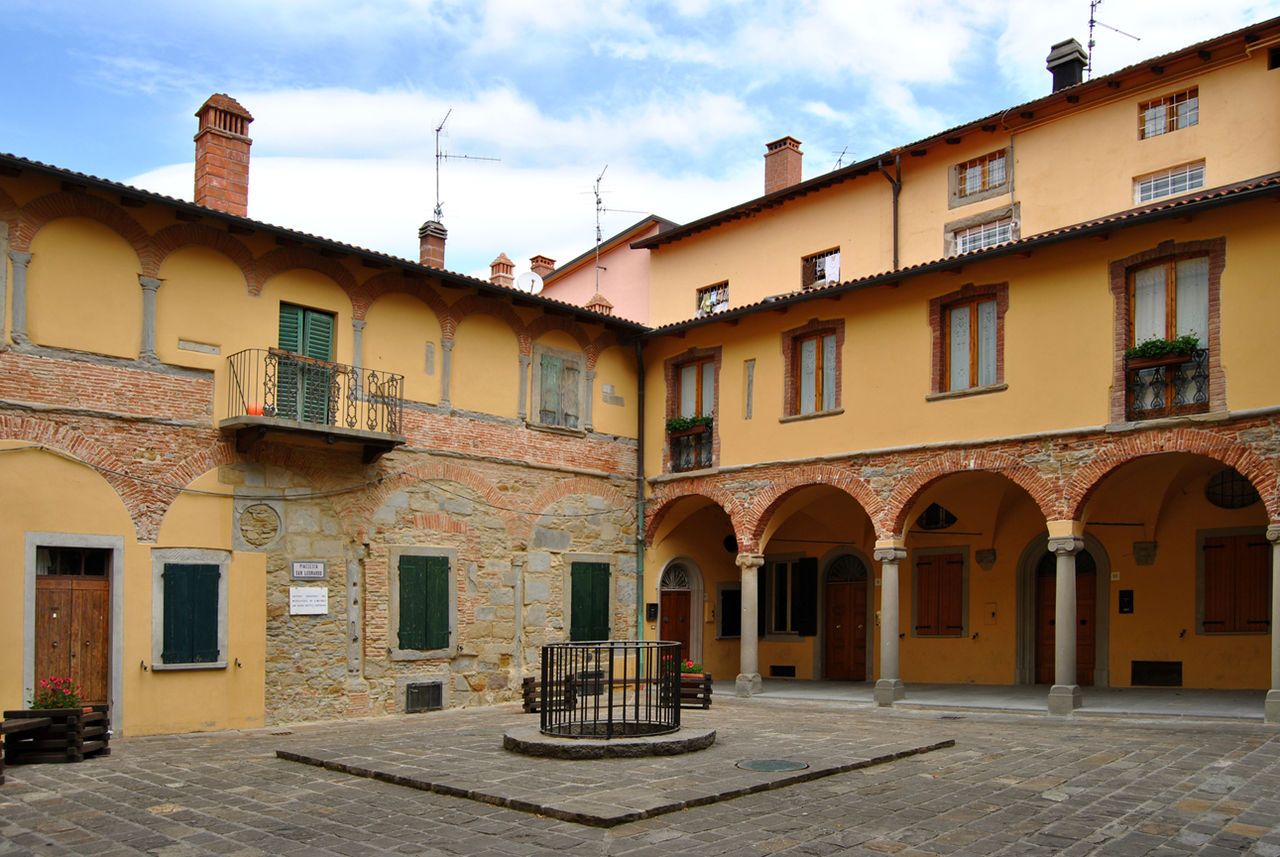All about the porticoes off the historic centre
Updated on 04 May 2022 From Bologna Welcome
Porticoes are everywhere; you only need to look beyond the city walls to realise how wide their embrace is.
Down in the Bolognese lowlands, Pieve di Cento is commonly referred to as 'little Bologna' due to the numerous well-preserved porticoes in the historic centre that make it a real gem. Also worth mentioning is the Casa degli Anziani, an ancient multifunctional building supported by one of the oldest wooden porticoes in the town, once an inn, pilgrim shelter and horse post.
In Budrio and San Pietro in Casale, on the other hand, just wander through the narrow alleys and admire the town's archways in all their beauty.

The imposing Palazzo Comunale (Town Hall) in Imola stands in the heart of the historic centre, straddling the via Emilia (ancient Roman decumanus), also home to the portico of Palazzo Sersanti and the ancient Farmacia dell'Ospedale, as well as the via Appia (Roman cardo). Brimming with porticoes, the city welcomes the visitor amidst capitals, long columns and wide arches in a long walk of discovery. Mention must also be made of the portico on via XX Settembre in the Painted Town of Dozza, a unique example of a porticoed pathway in such an enchanting village.

Finally, nestled in the Apennine mountains dwells the 16th-century Chiostro Olivetano della Cisterna, where rainwater would be collected for public use. As the sun rises in Piazzetta San Leonardo in Monghidoro, peeping through the columns, visitors love chasing the moving shadows.
